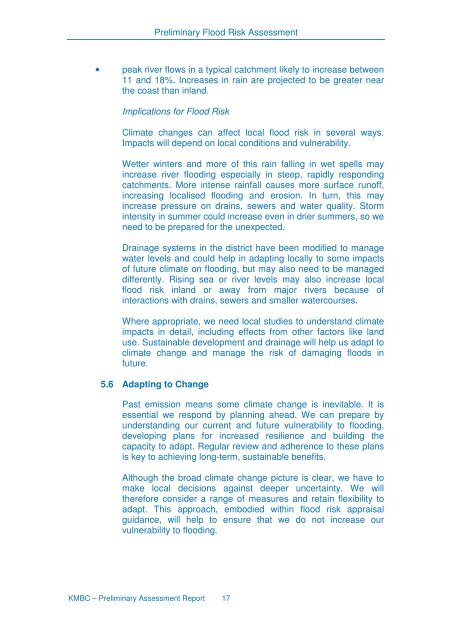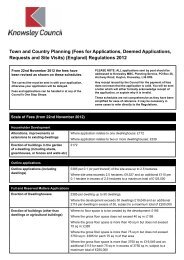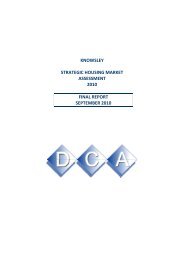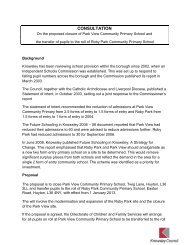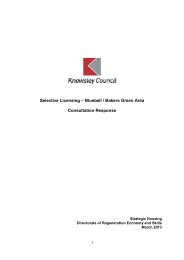preliminary flo assessment r preliminary flood risk assessment report ...
preliminary flo assessment r preliminary flood risk assessment report ...
preliminary flo assessment r preliminary flood risk assessment report ...
Create successful ePaper yourself
Turn your PDF publications into a flip-book with our unique Google optimized e-Paper software.
Preliminary Flood Risk Assessment<br />
• peak river <strong>flo</strong>ws in a typical catchment likely to increase between<br />
11 and 18%. Increases in rain are projected to be greater near<br />
the coast than inland.<br />
Implications for Flood Risk<br />
Climate changes can affect local <strong>flo</strong>od <strong>risk</strong> in several ways.<br />
Impacts will depend on local conditions and vulnerability.<br />
Wetter winters and more of this rain falling in wet spells may<br />
increase river <strong>flo</strong>oding especially in steep, rapidly responding<br />
catchments. More intense rainfall causes more surface runoff,<br />
increasing localised <strong>flo</strong>oding and erosion. In turn, this may<br />
increase pressure on drains, sewers and water quality. Storm<br />
intensity in summer could increase even in drier summers, so we<br />
need to be prepared for the unexpected.<br />
Drainage systems in the district have been modified to manage<br />
water levels and could help in adapting locally to some impacts<br />
of future climate on <strong>flo</strong>oding, but may also need to be managed<br />
differently. Rising sea or river levels may also increase local<br />
<strong>flo</strong>od <strong>risk</strong> inland or away from major rivers because of<br />
interactions with drains, sewers and smaller watercourses.<br />
Where appropriate, we need local studies to understand climate<br />
impacts in detail, including effects from other factors like land<br />
use. Sustainable development and drainage will help us adapt to<br />
climate change and manage the <strong>risk</strong> of damaging <strong>flo</strong>ods in<br />
future.<br />
5.6 Adapting to Change<br />
Past emission means some climate change is inevitable. It is<br />
essential we respond by planning ahead. We can prepare by<br />
understanding our current and future vulnerability to <strong>flo</strong>oding,<br />
developing plans for increased resilience and building the<br />
capacity to adapt. Regular review and adherence to these plans<br />
is key to achieving long-term, sustainable benefits.<br />
Although the broad climate change picture is clear, we have to<br />
make local decisions against deeper uncertainty. We will<br />
therefore consider a range of measures and retain flexibility to<br />
adapt. This approach, embodied within <strong>flo</strong>od <strong>risk</strong> appraisal<br />
guidance, will help to ensure that we do not increase our<br />
vulnerability to <strong>flo</strong>oding.<br />
KMBC – Preliminary Assessment Report 17


